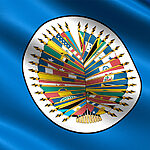I have used up all my sick days…now what?
What is sick leave?
For many years, health and safety management has been a fundamental element of employer responsibilities in the wider context of staff welfare, which goes beyond the physical working environment and includes various services, facilities and benefits provided to employees for their intellectual and social betterment.
Sick leave (or medical leave) is a crucial pillar in this architecture, ensuring employees get paid when they are absent from work due to illness, injury, or disability (have you read our article about the advantages of disability inclusion? If not, find out more here!).
The International Labour Organization (ILO) in its Office Directive No. 341 defines sick leave, or sick pay, as an entitlement “aimed to provide income protection to staff members who, due to sickness or accident, are medically unable to perform their official duties, so that they can address their health needs and seek early medical care”. In order to benefit from sick leave, staff members are usually required to provide their organisation with a medical certificate or a medical report. A medical certificate indicates that a qualified medical practitioner has consulted with the employee and has recommended time away from work, whereas a medical report contains confidential medical information, such as specific details of diagnosis and treatments, and should only be shared with medical staff.
What is covered in medical leave?
The vast majority of international organisations have policies in place that grant staff members medical leave in cases of sickness, physical and mental injuries (regardless of whether or not they are work-related), and disability. However, almost all short and long-term sick leave programmes exclude medical leave in cases where the inability to work results from self-harming behaviours or from the performance of unlawful activities.
Some of the most common exceptions involve cases of attempted suicide, intentionally self-inflicted injuries resulting in total or partial disability, physical or mental disorders resulting from the abuse of alcohol, drugs or other substances not prescribed by a doctor, service in the armed forces, participation in war/war-like operations and all injuries resulting from the commission of illegal activities.
Staff members should always be aware of what is included under the definition of medical leave in their organisation’s policies, especially for those working in hazardous duty stations located in politically unstable countries or in countries with ongoing armed conflicts, which may involve higher risks to their physical and emotional safety.
What is the difference between short-term and long-term medical leave?
There are different types of medical leave, but the fundamental and most relevant distinction relates to the length of leave. The duration of so-called short-term medical leave varies greatly between organisations, but usually ranges between a minimum of 90 days and up to two years.
After this period of sick leave, if staff members are still unable to work or even to be partially reintegrated into the workplace with the help of reasonable accommodation, they may consider applying for a long-term medical leave programme or taking out a worker incapacity insurance policy which can guarantee them an income until retirement age (usually around 70% of what they received before medical leave).
Other international organisations do not make an explicit distinction between short-term and long-term medical leave. Nevertheless, they have programmes in place that address both these types of scenarios.
A clear example of this is the European Bank for Reconstruction and Development (EBRD). EBRD does not make any specific reference to short- or long-term medical leave but covers both of these options by guaranteeing staff members paid sick leave for up to 6 months, after which they can opt for worker incapacity insurance.
It is difficult to identify one system that is better than another or an organisation that has a more generous policy because the effectiveness of these solutions mainly depends on the benefits offered to the staff member at the time of return to work.
What happens when you return to work?
Many international organisations ensure a variety of medical entitlements for their employees and go further to assist staff members’ reintegration into the workplace after medical leave by providing reasonable accommodations.
Reasonable accommodation can be defined as an adjustment to a job or work environment that makes it possible for individuals with a disability or injury to perform their job duties. Under UN Secretary-General Bulletin ST/SGB/2014/3, a reasonable accommodation may also include, for example, “adjustment and modification of equipment, modification of job content, working hours, commuting and organization of work for the staff member concerned”.
How is this put into practice at different organisations? Here are some examples of reasonable accommodations available to staff members:
- OSCE offers options such as staggered working hours, job sharing, part-time employment and telecommuting.
- EBRD can authorize a staff member to carry out their duties and responsibilities at a different location and/or on different working hours from the staff member’s location or standard working hours at that location – these are referred to as “working adjustments”.
- The Global Fund (TGF) allows flexible work options to be agreed with staff such as teleworking, part-time work and job sharing. TGF also introduced a policy in 2017 on “Facilitating Return to Work after Long-term Medical Leave”.
- At the International Monetary Fund, staff members can request alternative workplace accommodations, flexible work arrangements (part-time work, telework, alternative work schedules), and reimbursement for supporting equipment (e.g. assisted listening devices, wheelchairs, eyeglasses, etc.). The Fund provides administrative help and confidential advisory services to staff members who experience problems or are not sure if their requests can be accommodated; as well as financial advice or assistance in case of a major illness that may lead to disability (such as cancer, osteoporosis, Alzheimers or serious cases of dementia, heart disease, etc.).
Key tips for staff
- Ask for help. Staff members who are experiencing health issues that may entitle them to a period of sick leave should first consult the rules and protocols set out in their employee handbook or staff rules and regulations and seek guidance from their staff association. In particular, staff members should check what exactly is included in medical leave.
- Communicate with the organisation. As soon as staff members realize they are not in a condition to work, they should contact Human Resources and/or their immediate supervisor clarifying the reason for their absence and when they can provide a medical certificate/report to back up their request for a sick leave. A sudden illness or a bad injury resulting in a visit to the emergency room may make people temporarily forget about their work, but it is the staff member’s responsibility to notify their employer as soon as possible.
- Keep a good record. Depending on the organisation, staff members are required to (i) undergo a medical examination; and (ii) obtain a medical certificate or a medical report from a qualified medical practitioner. It is important for staff members to carefully keep records of these documents as they form the basis of their claim to entitlements and will need to be shared with the organisation. For example, eligibility for extended sick leave or long-term disability programmes generally requires the staff member to undergo regular medical examinations so that the organisation can verify the employee’s health status.
- Request workplace accommodations from HR before you return to work. Your health comes first. Do not be shy in asking for adjustments to your working arrangements, as required, when you go back to work. You are legally entitled to make this request under the staff rules and ultimately, the adjustments are likely to ensure continuity of work so they benefit the organisation as much as they benefit the staff member.
- Explore the possibility of extended medical leave. If, after short-term sick leave, you are still unable to return to your regular duties and cannot be reassigned to another position, speak to your supervisor, staff association and HR for guidance on your organisation’s extended leave or long-term disability programme. Depending on the organisation, you should send your application along with your medical reports to the office responsible for handling the claim (usually HR or an externally-appointed administrator). While you wait for the outcome of your application, you can be placed on half pay sick leave or in special leave without pay. Remember that it is always possible to challenge the decision not to grant you medical leave and that, in the event of a disagreement, some organisations provide access to independent medical evaluations.










